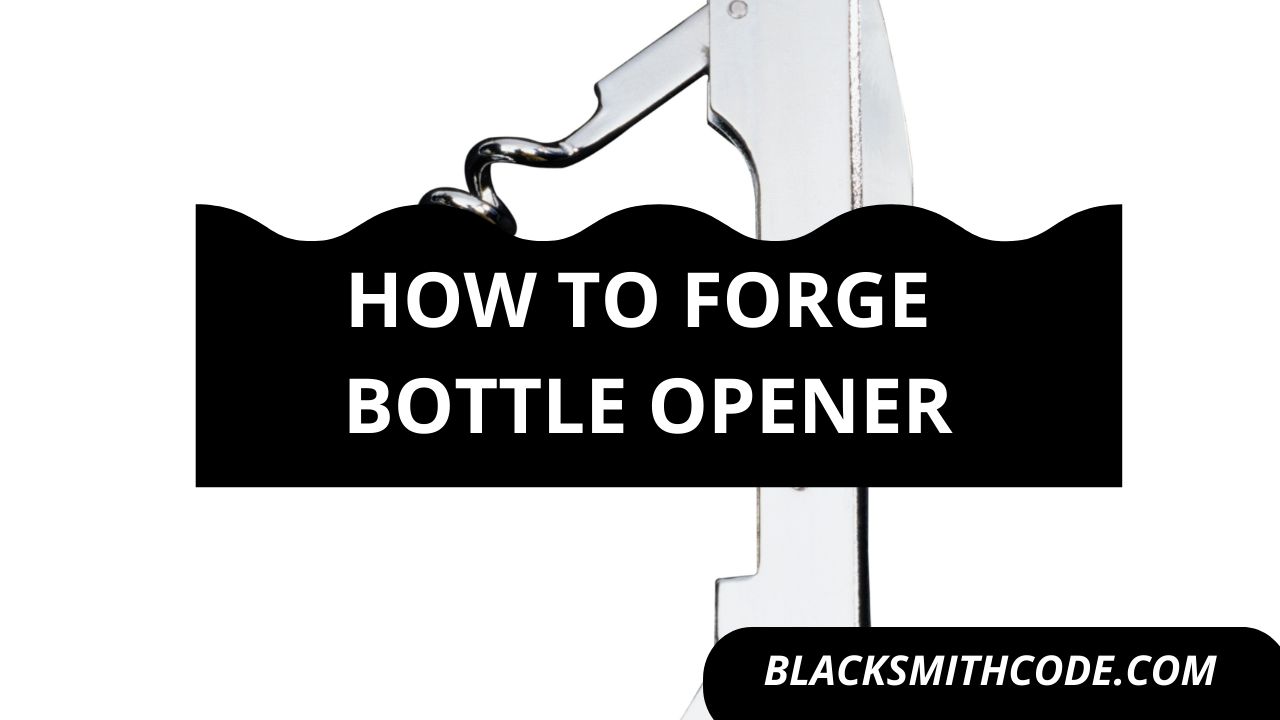Ever considered adding new techniques to your blacksmithing skills? Forge welding is an essential skill, particularly for blacksmiths. It is one of the skills that improve the productivity and quality of a blacksmith’s work. Let’s find out how to forge weld steel.
Forge welding is the technique of joining two or more metals. It sounds like a normal technique, right? Forge welding of steel is essential because it is one of the most utilized materials in blacksmithing.
Joining two or more steel is almost inevitable in blacksmithing. It is essential in the creation and production of a lot of blacksmithing materials. Therefore, most beginner blacksmiths are usually encouraged to practice how to forge weld until it becomes integrated into their skills.
Learning the process of forge welding steel is not challenging. As long as you have the basic blacksmithing skills and the right tools, you can learn how to forge weld steel in six easy steps.
Instructions on How to Forge Weld Steel
Step 1: Prepare the Materials
First off, you need to realize that each material’s forge welding temperature varies. Often, it is usually best to heat the material to about 90% of the material’s melting temperature.
You can read the temperature of steel by its color change. The color code is usually orange for steel. Therefore, you can prepare your forge and get it to a suitable temperature at this stage.
Step 2: Applying Flux/ Fluxing
Another important thing to note in the forge welding technique is that it doesn’t work well on contaminated surfaces. Forge welding a surface with dirt or other contaminants will unavoidably yield bad results.
The joints will be weak, and the weld will come out poorly. Dirt and contaminants also influence the melting temperature of steel. Therefore, figuring out the forging temperature of the steel will be difficult.
Adding flux like borax will prevent oxygen from reaching the surface of the metal. Thus, the fluxing process while forge welding steel will help you prevent contaminants from the atmosphere.
Quick Steps
- Sprinkle the borax on the surface of the steel.
- You can heat the steel slightly before applying the flux.
- Concentrate the flux more on the surfaces that you intend to join.
Step 3: Applying Heat
Now, it is time to make use of your forge. All it requires you to do is place the steel in the heart of the fire. It is best to heat the metal in a reducing environment to prevent air blast. Ensure that you heat the steel to a suitable temperature.
The suitable forging temperature for steel is usually between 1700 to 2000℉.
Step 4: Watch Out for Color Change
It is important to pay attention to the steel’s temperature while in the forge. One of the best ways of observing the temperature of steel is to observe the color change. For steel, it is best to let it reach a lemon-yellow color.
However, judging the temperature of steel with color change can require a little experience. If you are familiar with working with steel, then you should be aware of how its color changes with temperature.
Nevertheless, you need a way to identify the temperature to avoid overheating the steel. Overheating the steel can result to starting the process all over again.
Step 5: Hammering and Joining
This step requires the knowledge of your hammering technique. You can either make use of a power hammer or a hydraulic hammer. Also, you have to carry out the hammering rapidly before the steel gets cold.
Quick Steps
- Secure the steel with a piece of wire metal to form the primary forge.
- Hammer the steel gently and watch the two pieces fuse to become one.
- The hammering here is quite different from forming the shape. Hammer gently with precision.
Avoid hitting the steel too hard. The power you exert on hitting the steel should be dependent on the thickness of the steel. Also, it is crucial not to miss any spot.
Overall, the hammering needs to be steady, precise, and technical.
Step 6: Clean Up
Once you have your desired result with the hammering, you can clean up your work. The main aim of this process is to improve the project’s outlook after the forge welding is done. Use a wire brush to remove the welding slags.
FAQs on How to Forge Weld Steel
Question
Can I forge weld steel without using flux?
Yes, you can forge weld steel without the use of flux. This addition is a mystery most blacksmiths find out to unravel. If you are confident about the cleanliness of your steel’s surface, then you might not need to use flux.
However, using flux makes the entire forge welding process easier. The addition of flux prevents atmospheric contaminants, improves welding joints, and prevents augmentation of scales on the surface.
Question
Will forge welding of steel produce a strong joint?
Forge welding of steel produces one of the strongest joints. Aside from steel, even other materials can be forged and still produce a strong joint. If forge welding is done the right way, you can trust it to give you a perfect joint.
Question
Can I use borax as a flux for forge welding steel?
Borax is usually considered as one of the best fluxes for forge welding steel. Sometimes, borax is mixed with ammonium chloride to improve its performance.
Question
Can I use Vaseline as a flux to forge weld steel?
The concise answer is yes. The use of petroleum jelly, otherwise known as Vaseline, is an effective alternative for borax and other common flux. However, the use of this alternative requires caution. It is not usually advisable for beginners and inexperienced blacksmiths.
Video
Warnings and Precautions
It is essential to take certain precautions and adhere to all warnings while forge welding steel. These precautions include;
- Ensure the use of flame-resistant overall clothing since you would be working closely with the forge.
- Make sure the use of safety boots, earplugs, and other safety gears during the process
- Ensure proper ventilation in your workspace.
- Handle all materials that have entered the forge with extreme care to avoid burn.





